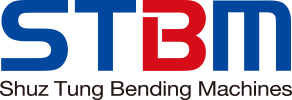Why Hydroformed Tubes Are Popular for Bicycle Frames
In the World of Bicycle Design: Advancements and Hydroformed Tube Technology
In the realm of bicycle design, innovation and technology continuously evolve to meet the demands of both professional and recreational cyclists. Among these advancements, hydroformed tube technology has gained significant traction, becoming a popular choice for high-end bicycle frames. This article delves into the reasons behind the popularity of hydroformed tubes, exploring their advantages in terms of lightweight and strength, design freedom, structural rigidity and efficiency, aesthetics, cost-effectiveness, and material diversity.
Lightweight and Strength: The Core Advantages
Lightweight Frames for Enhanced Performance
For cyclists, especially those in competitive racing, the weight of the bicycle frame significantly impacts performance. Hydroformed tube technology excels in producing frames that are both lightweight and robust. By utilizing high-pressure fluid to shape metal tubes into intricate forms with consistent wall thickness, hydroforming achieves frames that offer superior strength-to-weight ratios. This ensures riders can attain higher speeds and endure longer distances with less effort.
Enhanced Durability and Strength
Hydroforming's ability to maintain uniform tube thickness enhances frame durability. This uniformity ensures the frame withstands varying stresses and strains encountered during rides, thereby enhancing overall safety and longevity.
The Impact on Performance
For high-performance bicycles, reducing weight while maintaining strength is crucial. A lighter frame reduces overall bicycle weight, improving acceleration and climbing efficiency. Meanwhile, the high strength of hydroformed tubes ensures that the frame remains robust and reliable under intense usage, whether on the road or off-road.
Design Freedom: Expanding Creative Horizons
Aerodynamic Optimization
Hydroformed tubes empower designers to craft frames with aerodynamically optimized shapes. These streamlined designs reduce air resistance, enabling cyclists to achieve greater speeds with reduced energy expenditure. Such advantages are particularly coveted by competitive road cyclists and time-trialists seeking optimal performance gains.
Hydroforming Tubing: Hydroforming Tubing
Ergonomic Excellence
Beyond aerodynamics, hydroformed tubes can be shaped to enhance rider comfort. Frames designed with ergonomic considerations accommodate natural body movements, minimizing fatigue during extended rides. This design versatility caters to diverse cyclist preferences, from leisurely commuters to elite athletes.
Structural Rigidity and Efficiency
- Stress Distribution and Vibration Damping
One of the key advantages of hydroformed tubes is their ability to distribute stress and dampen vibrations effectively. This is achieved through precise control over the tube's shape and thickness during the hydroforming process. By optimizing these parameters, frames can be designed to handle the stresses of different terrains and riding styles more efficiently.
- Importance for Mountain and Road Bikes
For mountain bikes, which frequently encounter rough and uneven terrains, the enhanced structural rigidity and vibration damping properties of hydroformed tubes are particularly valuable. These features help maintain stability and control, even on challenging trails. Similarly, for road bikes, improved rigidity and efficiency translate to better power transfer and responsiveness, essential for high-speed riding.
Hydroforming Tubing: Hydroforming Tubing
Aesthetics: Form Meets Function
Sleek and Uniform Appearance
Hydroforming technology produces tubes with a smooth, uniform appearance, free from welding marks and inconsistencies common in conventional frames. This aesthetic refinement not only enhances the overall look of the bicycle but also signifies advanced engineering and craftsmanship, appealing to discerning consumers.
Consumer Appeal
The visual appeal of a bicycle frame plays a pivotal role in consumer purchasing decisions. A well-designed frame not only enhances bike aesthetics but also communicates quality and performance. Cyclists appreciate owning bicycles that perform as well as they look.
Cost-Effectiveness: Striking a Balance
Efficient Production
Despite initial investment costs in hydroforming equipment, its efficiency in large-scale production offsets expenses over time. Hydroforming enables rapid, consistent production of high-quality frames, minimizing labor and production time.
Reduced Material Waste
Hydroforming optimizes material usage by precisely controlling metal quantities per tube, reducing waste and promoting sustainable manufacturing practices. These efficiencies contribute to long-term cost savings for manufacturers and competitive pricing for consumers.
Long-Term Benefits
Manufacturers benefit from reduced per-frame production costs with hydroforming, enabling them to offer high-performance bicycles at competitive prices. This cost-effectiveness enhances the appeal of hydroformed frames across various consumer segments.
Material Diversity: Versatility Unleashed
Compatibility with Diverse Metals
Hydroforming accommodates a wide array of metals commonly used in bicycle manufacturing, including aluminum and titanium. These materials boast exceptional strength-to-weight ratios, ideal for crafting lightweight yet durable bicycle frames.
Meeting Diverse Needs
The versatility of hydroforming extends to producing frames for different bicycle types, from entry-level models to professional-grade bikes. This adaptability enables manufacturers to meet varied market demands and preferences.
Conclusion
Hydroformed tubes have emerged as a favored choice for bicycle frames, thanks to their multifaceted advantages. The ability to produce lightweight, durable frames with enhanced aerodynamics and ergonomic designs positions hydroformed technology at the forefront of bicycle innovation. Furthermore, its structural integrity, aesthetic appeal, cost-effectiveness, and material versatility continue to appeal to manufacturers and consumers alike. As a result, hydroformed tube technology is reshaping the future of bicycle design, offering riders superior performance, comfort, and style.
For more information on hydroforming tubing, visit SHUZ TUNG at Hydroforming Tubing.
SHUZ TUNG Machinery
No. 17-1, Houliao Rd., Waipu Dist., Taichung City 43859, Taiwan, R.O.C.
Contact us |
|
Email: | |
Phone: | +886-4-26831886 |
Fax: | +886-4-26836158 |


